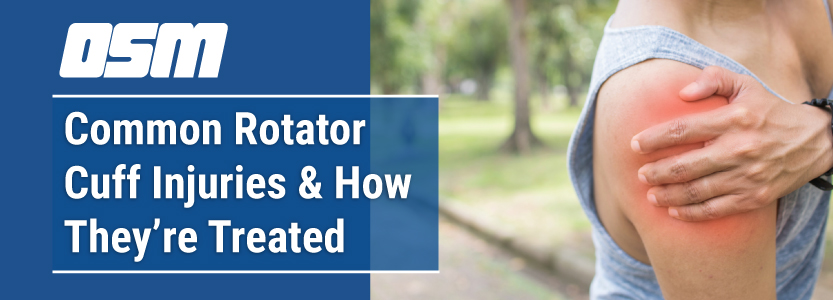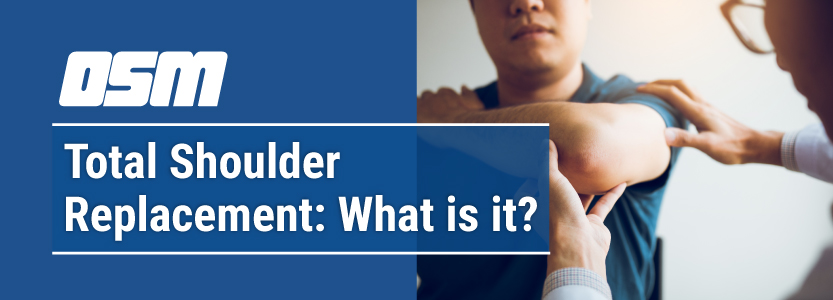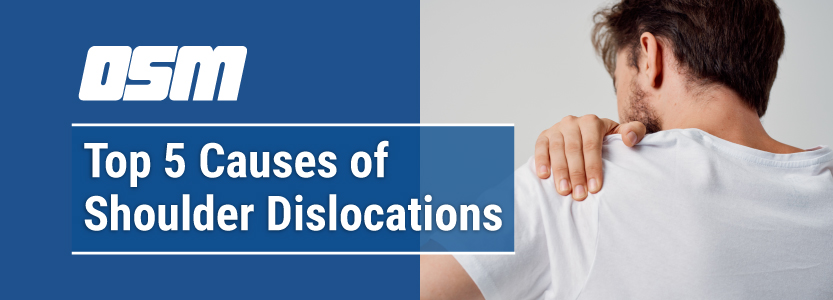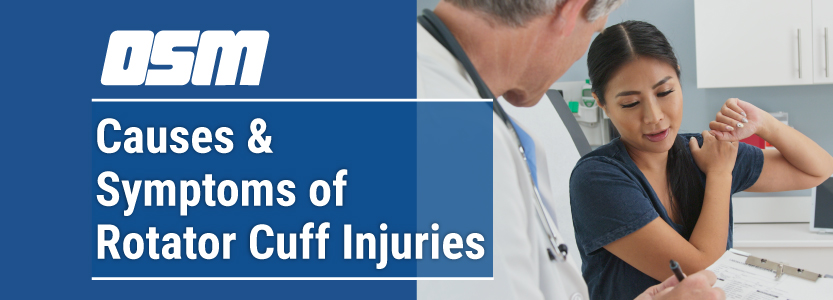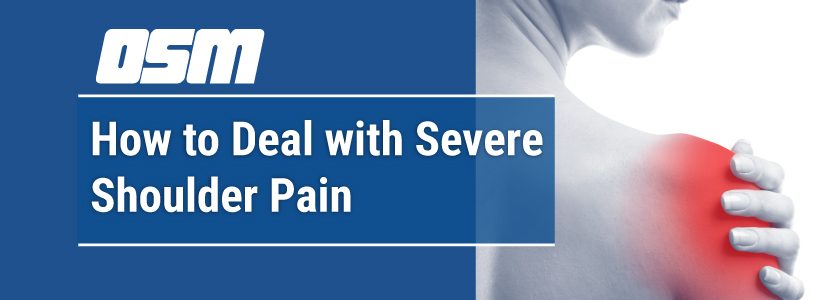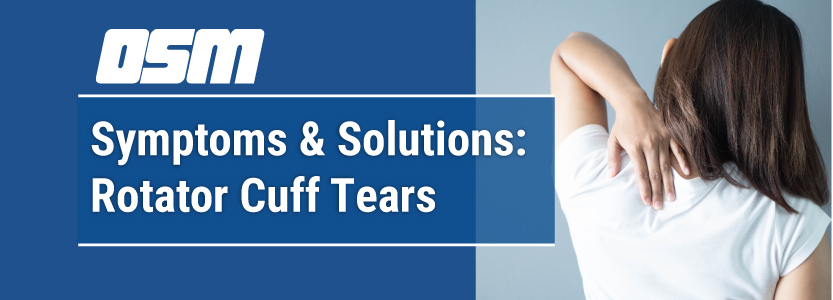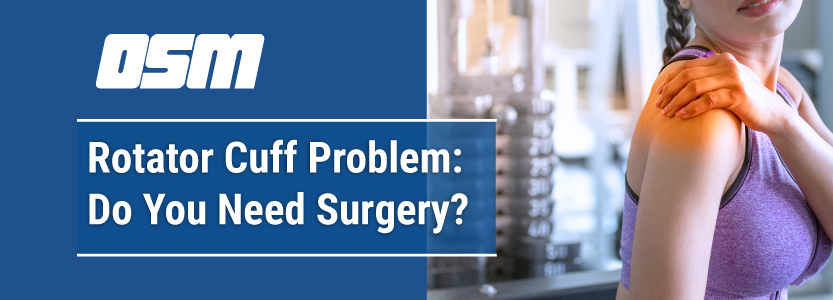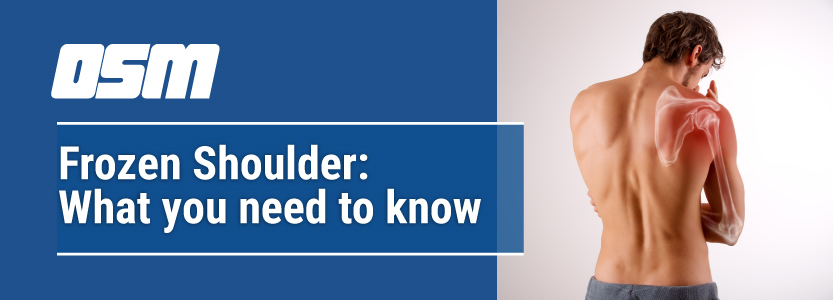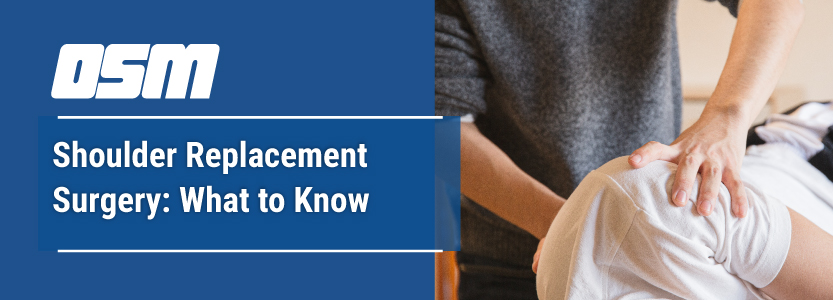Article on MedicalNewsToday, medically reviewed by William Morrison, M.D. — Written by Caroline Gillott on December 5, 2017
Frozen shoulder is a common condition in which the shoulder stiffens, reducing its mobility. It is also known as adhesive capsulitis.
The term “frozen shoulder” is often used incorrectly for arthritis, but these two conditions are unrelated. Frozen shoulder refers specifically to the shoulder joint, while arthritis may refer to other or multiple joints. It commonly affects people aged between 40 and 60 years, and it is more likely in women than in men. It is estimated to affect about 3 percent of people. It can affect one or both shoulders.
Exercises
Frequent, gentle exercise can prevent and possibly reverse stiffness in the shoulder.
The American Association of Orthopaedic Surgeons (AAOS) suggest some simple exercises:
Crossover arm stretch: Holding the upper arm of the affected side, gently pull the arm across in front of you, under the chin. Hold for 30 seconds. Relax and repeat.
Exercises should be guided by a doctor, an osteopath, or a physical therapist. Anyone experiencing stiffness in the shoulder joint should seek medical attention sooner rather than later to prevent permanent stiffness.
Harvard Medical School suggest the following exercises for relieving a frozen shoulder:
Pendulum stretch
Stand with the shoulders relaxed. Lean forward with the hand of the unaffected arm resting on a table. Let the affected arm hang down vertically and swing in a small circle, around 1 foot in diameter. Increase the diameter over several days, as you gain strength.
Towel stretch
Grab both ends of a towel behind your back. With the good arm, pull the towel, and the affected arm, up toward the shoulder. Repeat 10 to 20 times a day.
Symptoms
A person with a frozen shoulder will have a persistently painful and stiff shoulder joint. Signs and symptoms develop gradually, and usually resolve on their own.
Causes
The shoulder is made up of three bones: The shoulder blade, the collarbone, and the upper arm bone, or humerus. The shoulder has a ball-and-socket joint. The round head of the upper arm bone fits into this socket. Connective tissue, known as the shoulder capsule, surrounds this joint. Synovial fluid enables the joint to move without friction.
Frozen shoulder is thought to happen when scar tissue forms in the shoulder. This causes the shoulder joint’s capsule to thicken and tighten, leaving less room for movement. Movement may become stiff and painful. The exact cause is not fully understood, and it cannot always be identified. However, most people with frozen shoulder have experienced immobility as a result of a recent injury or fracture. The condition is common in people with diabetes.
Risk factors
Common risk factors for frozen shoulder are:
- Age: Being over 40 years of age.
- Gender: 70 percent of people with frozen shoulder are women.
- Recent trauma: Surgery or and arm fracture can lead to immobility during recovery, and this may cause the shoulder capsule to stiffen.
- Diabetes: 10 to 20 percent of people with diabetes develop frozen shoulder, and symptoms may be more severe. The reasons are unclear.
Other conditions that can increase the risk are:
- stroke
- hyperthyroidism, or overactive thyroid
- hypothyroidism, or underactive thyroid
- cardiovascular disease
- Parkinson’s disease
Stages
Symptoms are usually classified in three stages, as they worsen gradually and then resolve within a 2- to 3-year period.
The AAOS describe three stages:
- Freezing, or painful stage: Pain increases gradually, making shoulder motion harder and harder. Pain tends to be worse at night. This stage can last from 6 weeks to 9 months.
- Frozen: Pain does not worsen, and it may decrease at this stage. The shoulder remains stiff. It can last from 4 to 6 months, and movement may be restricted.
- Thawing: Movement gets easier and may eventually return to normal. Pain may fade but occasionally recur. This takes between 6 months and 2 years.
Over 90 percent of people find that with simple exercises and pain control, symptoms improve. A frozen shoulder normally recovers, but it can take 3 years.
Diagnosis
Doctors will most likely diagnose frozen shoulder based on signs, symptoms, and a physical exam, paying close attention to the arms and shoulders. The severity of frozen shoulder is determined by a basic test in which a doctor presses and moves certain parts of the arm and shoulder. Structural problems can only be identified with the help of imaging tests, such as an X-ray or Magnetic Resonance Imaging (MRI).
Treatment
The aim is to alleviate pain and preserve mobility and flexibility in the shoulder. In time and with treatment, 9 out of 10 patients experience relief. However, recovery may be slow, and symptoms can persist for several years. There are several ways to relieve pain and alleviate the condition.
Painkillers: Nonsteroidal anti-inflammatory drugs (NSAIDs) are available to purchase over-the counter, and may reduce inflammation and alleviate mild pain. Not all painkillers are suitable for every patient, so it is important to review options with the doctor.
Hot or cold compression packs: These can help reduce pain and swelling. Alternating between the two may help.
Corticosteroid injections: However, repeated corticosteroid injections are discouraged as they can have adverse effects, including further damage to the shoulder.
Transcutaneous electrical nerve stimulation (TENS): This works by numbing the nerve endings in the spinal cord that control pain. The TENS machine sends small to electrodes, or small electric pads, that are applied to the skin on the affected shoulder. Various TENS machines from different brands are available to purchase online.
Physical therapy: This can provide training in exercises to maintain as much mobility and flexibility as possible without straining the shoulder or causing too much pain.
Shoulder manipulation: The shoulder joint is gently moved while the patient is under a general anesthetic.
Shoulder arthroscopy: A minimally invasive type of surgery used in a small percentage of cases. A small endoscope, or tube, is inserted through a small incision into the shoulder joint to remove any scar tissue or adhesions. The doctor will suggest a suitable option depending on the severity of signs and symptoms.
Prevention
Frozen shoulder can only be prevented if it is caused by an injury that makes shoulder movement difficult. Anyone who experiences such an injury should talk to a doctor about exercises for maintaining mobility and flexibility of the shoulder joint.
The Orthopedic & Sports Medicine Center of Oregon is an award-winning, board-certified orthopedic group located in downtown Portland Oregon. We utilize both surgical and nonsurgical means to treat musculoskeletal trauma, spine diseases, sports injuries, degenerative diseases, infections, tumors and congenital disorders.
Our mission is to return our patients back to pain-free mobility and full strength as quickly and painlessly as possible using both surgical and non-surgical orthopedic procedures.
Our expert physicians provide leading-edge, comprehensive care in the diagnosis and treatment of orthopedic conditions, including total joint replacement and sports medicine. We apply the latest state-of-the-art techniques in order to return our patients to their active lifestyle.
If you’re looking for compassionate, expert orthopedic surgeons in Portland Oregon, contact OSM today.
Phone:
503-224-8399
Address
17355 Lower Boones Ferry Rd Suite 100A
Lake Oswego, OR 97035
Hours
Monday–Friday
8:00am – 4:30pm

